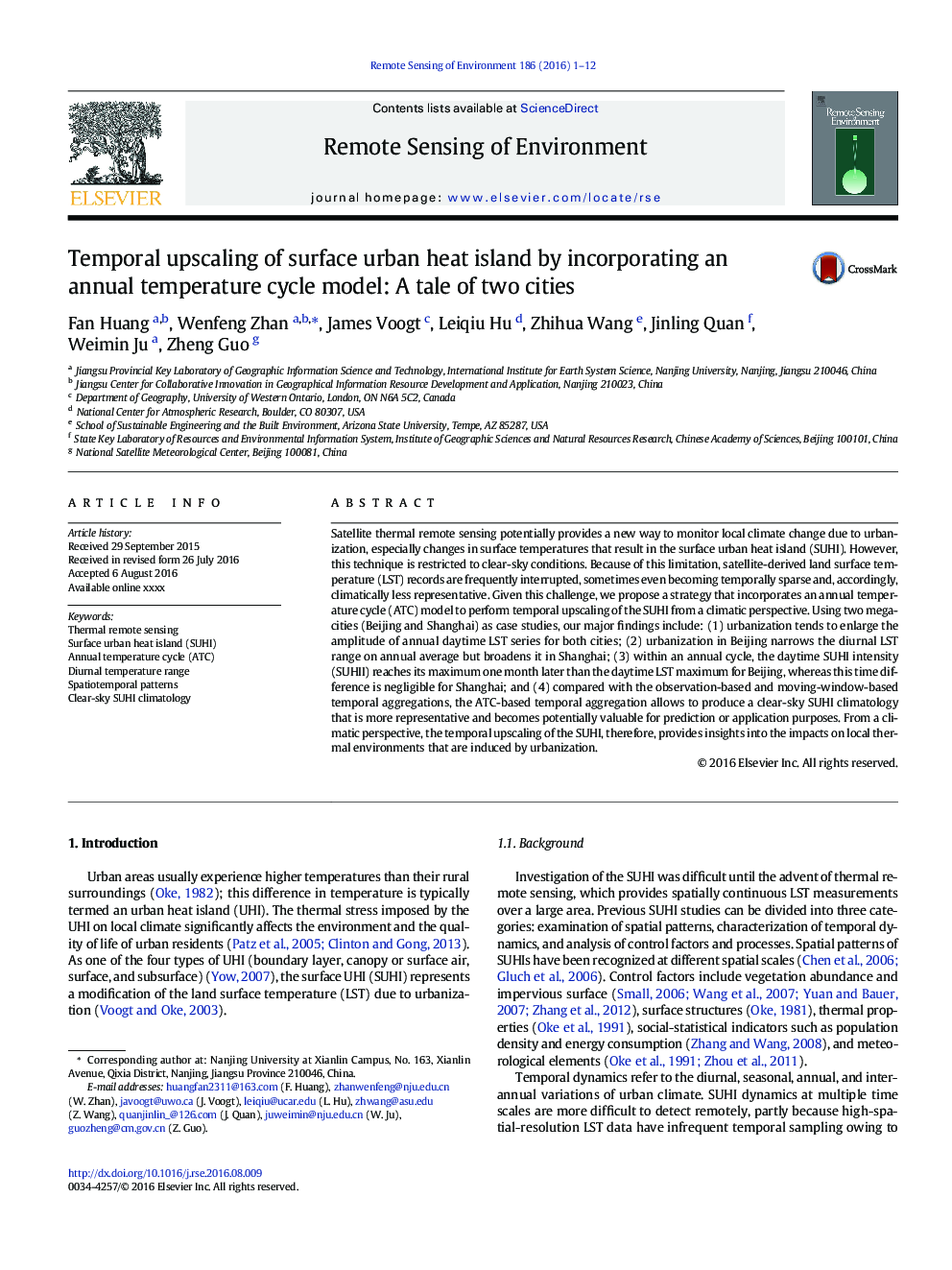| Article ID | Journal | Published Year | Pages | File Type |
|---|---|---|---|---|
| 6345026 | Remote Sensing of Environment | 2016 | 12 Pages |
Abstract
Satellite thermal remote sensing potentially provides a new way to monitor local climate change due to urbanization, especially changes in surface temperatures that result in the surface urban heat island (SUHI). However, this technique is restricted to clear-sky conditions. Because of this limitation, satellite-derived land surface temperature (LST) records are frequently interrupted, sometimes even becoming temporally sparse and, accordingly, climatically less representative. Given this challenge, we propose a strategy that incorporates an annual temperature cycle (ATC) model to perform temporal upscaling of the SUHI from a climatic perspective. Using two megacities (Beijing and Shanghai) as case studies, our major findings include: (1) urbanization tends to enlarge the amplitude of annual daytime LST series for both cities; (2) urbanization in Beijing narrows the diurnal LST range on annual average but broadens it in Shanghai; (3) within an annual cycle, the daytime SUHI intensity (SUHII) reaches its maximum one month later than the daytime LST maximum for Beijing, whereas this time difference is negligible for Shanghai; and (4) compared with the observation-based and moving-window-based temporal aggregations, the ATC-based temporal aggregation allows to produce a clear-sky SUHI climatology that is more representative and becomes potentially valuable for prediction or application purposes. From a climatic perspective, the temporal upscaling of the SUHI, therefore, provides insights into the impacts on local thermal environments that are induced by urbanization.
Related Topics
Physical Sciences and Engineering
Earth and Planetary Sciences
Computers in Earth Sciences
Authors
Fan Huang, Wenfeng Zhan, James Voogt, Leiqiu Hu, Zhihua Wang, Jinling Quan, Weimin Ju, Zheng Guo,
